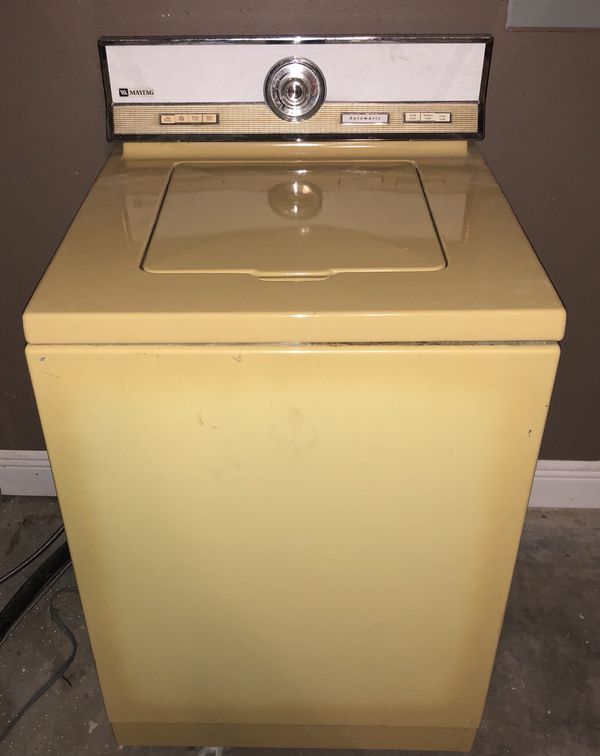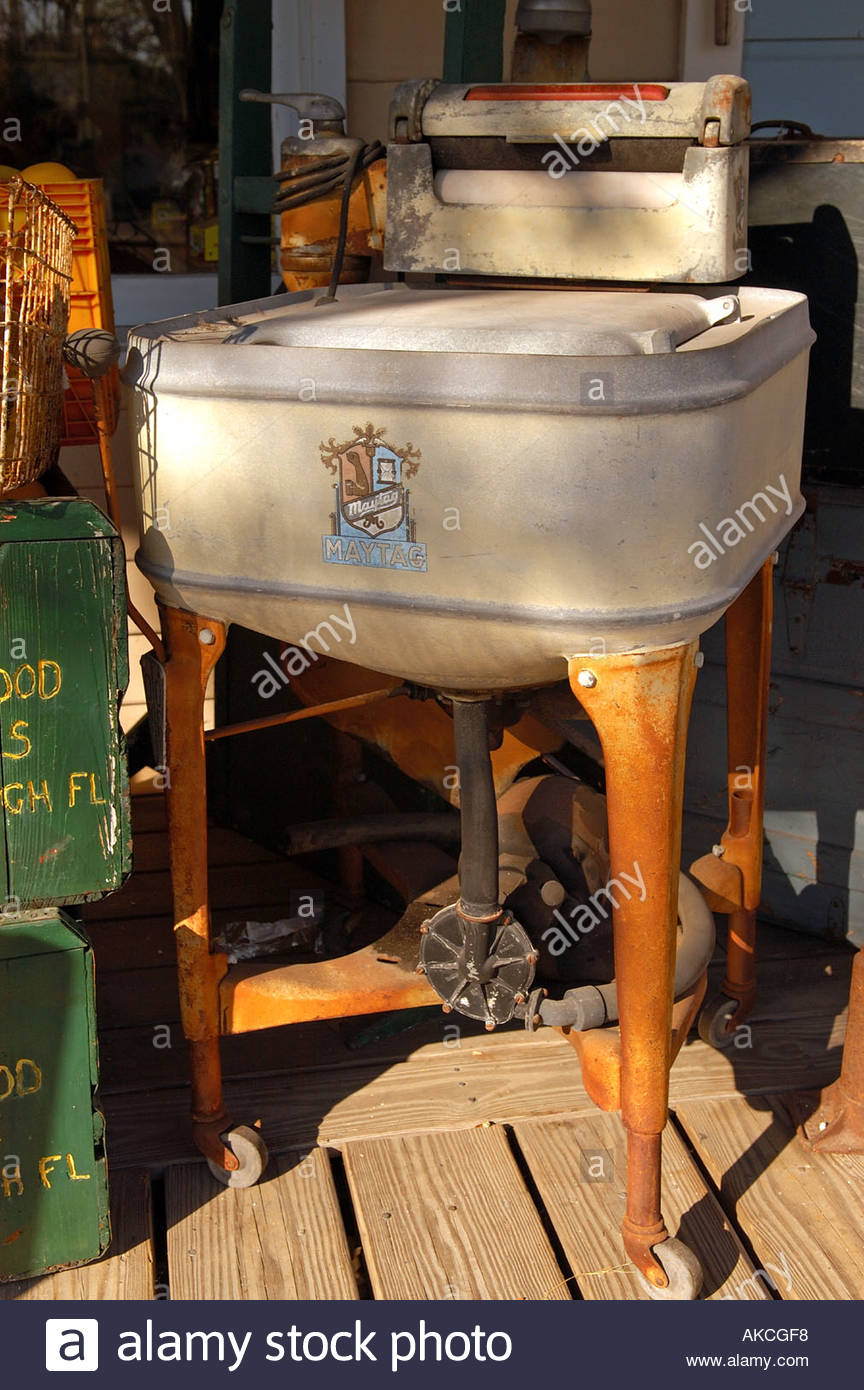

The drum-type washing machine featured a galvanized tub and an electric motor. Fisher and marketed by the Hurley Machine Company of Chicago. Called the Thor, it was invented by Alva J. But in 1908, the first commercial electric washer was introduced. Until the late 1800s, home washing machines were manual, while commercial models relied on steam and belts to operate.
#OLD WASHING MACHINE MANUAL#
While manual washing machines saved a lot of labor, it was the broad adoption of electricity that truly changed the way Americans washed clothes forever. Image Source: Edison Tech Center Electric Washing Machines for Commercial Use In 1876, Margaret Colvin invented the Triumph Rotary washer in Philadelphia. Members of the Shakers also began building and marketing large wooden washing machines designed for small-scale commercial use. William Blackstone also created a manual washing machine as a birthday gift for his wife around the same time. Two Americans named James King and Hamilton Smith made especially important contributions they each filed patents in the 1850s for what historians sometimes refer to as the first modern washers. In the 1850s, multiple strides were made in the creation of manual washing machines. The Industrial Revolution was a significant factor, as growing urban populations and a newly minted middle class created an unprecedented demand for labor-saving devices. But the washing machine didn’t really catch on in America until well into the 1800s. Amos Larcom of Watervliet, New York, received another washing machine patent in 1829. In 1797, the first washing machine patent was awarded to Nathaniel Briggs, a resident of New Hampshire. Laundry was done this way for thousands of years. The arduous task of washing clothing would typically be undertaken by women, servants, and sometimes soldiers. If washing clothing at the water source was not possible, multiple trips would have to be made to carry water from the river to a large basin in the home instead. Washing was often done at a riverside and clothing would have to be vigorously rubbed against rocks or a washboard. The gallery of the Secret Life of the Home can be found in the basement – don’t use the stairs by the main entrance, you want the stairs to be found between the Space and Modern World galleries on the ground floor.Image credit: Julia Bujalski Washing Clothes Before Machinesīefore washing machines, doing laundry was a day-long affair. An undiscovered country of the past, for many who have never seen the marvellous modern machines that their grandparents would have thought were the height of sophistication. This is a gallery of the familiar yet strange. The beginnings of the transformation are here, the early video games consoles and computers with barely enough processing power to switch on a modern daylight bulb but at the time, oh, did they excite with their unimaginable thinking power.

Begone the leather-clad radios and the plastic wood effect record players in favour of plain white slabs that fit in the palm of your hand. Away with cabinet-sized televisions and mechanical whirring, and occasionally chewing, videotape machines. Yet at the other end, in the realm of brown goods, the toys of our entertainment bloated and massive have shrunk in the digital wash to be the pocket-sized gadgets of today. White was yet to come to the realm of the white goods, as most domestic appliances are called today. The latest in steam washing for the domestic goddess.Īn era when the colour cream dominated domestic goods. Kettles that whistled when the water was hot, and refused to stop until you rushed to their side. Food mixers that would horrify a hygiene expert. The smooth shiny steel gadgets in our home shown to have once had a rougher more industrial feel to them, in many cases the smaller the device the more skeletal its iron forbears were. The world of the familiar we see around us every day twisted slightly out of shape, we’ve been steampunked into a new land that is unsettling and beguiling all at once. Yet, these domestic appliances are at once familiar - for a radio is, after all, a radio, and a washing machine has only ever had one function - and yet they are a strange world of unfamiliarity. Who would have thought that toasters, irons, kettles, televisions and washing machines could be so fascinating to look at. It’s one that many children will see, for down here also is their space for school visits, but we adults might have not noticed this space, devoted to the Secret Life of the Home.
#OLD WASHING MACHINE FULL#
In the basement of the Science Museum is a gallery that’s all too easy to miss, and yet is full of domestic wonders.


 0 kommentar(er)
0 kommentar(er)
